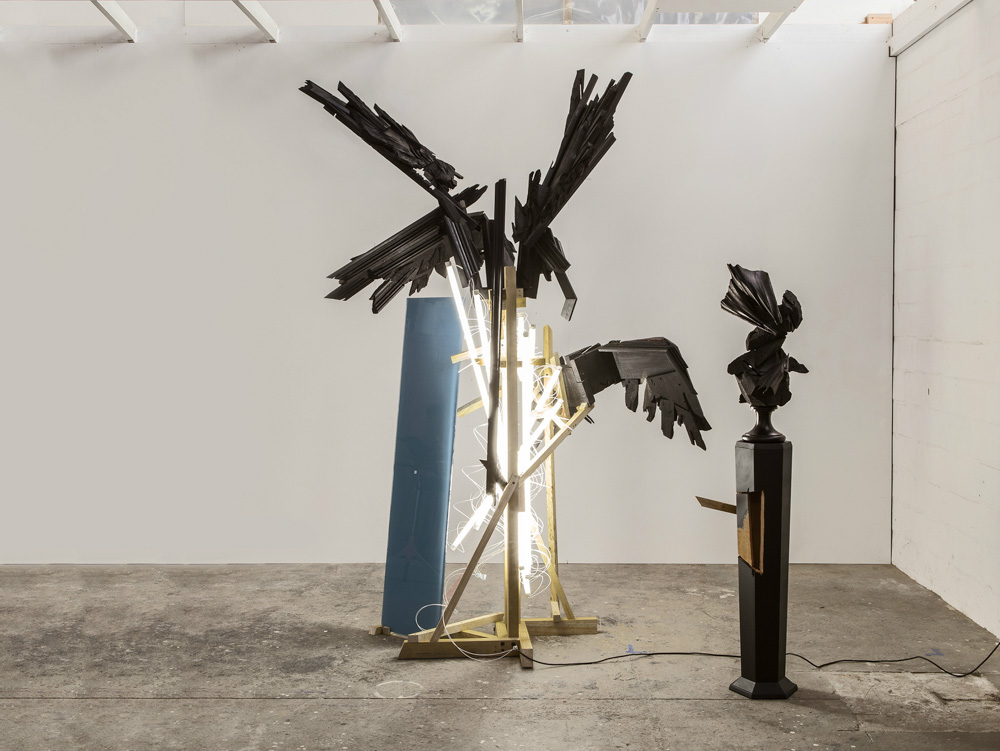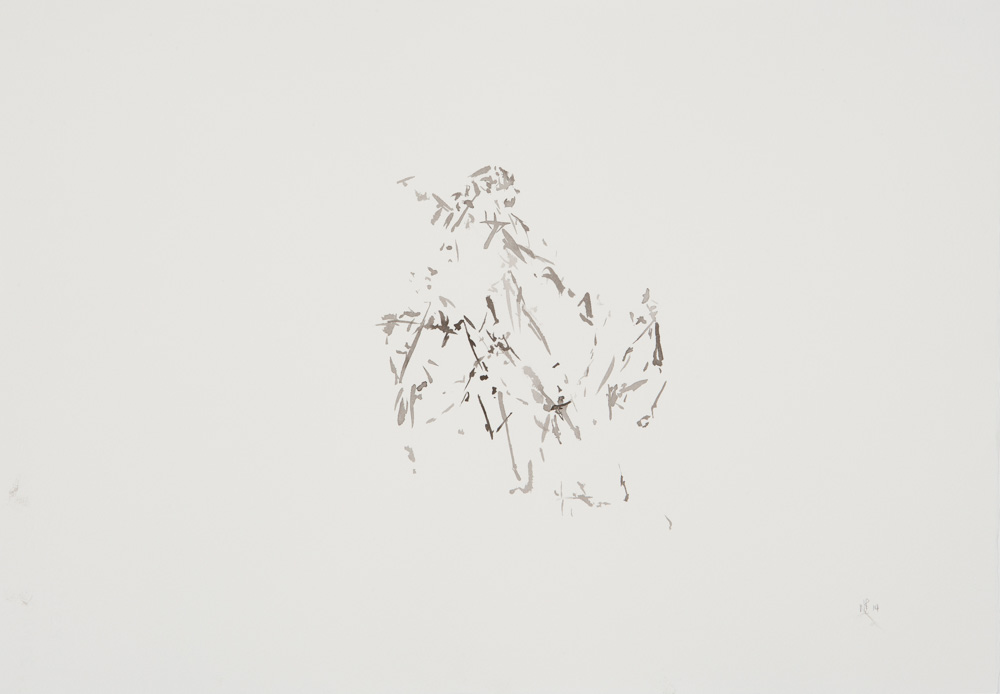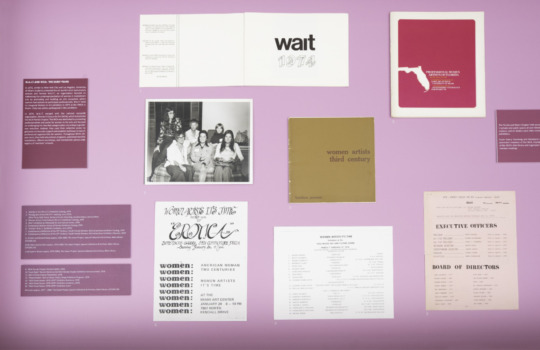
It is difficult to photograph South African artist Wim Botha’s work. There are blackened, light absorbing sculptures of abstracted busts, figures, or non-representational forms made from cast bronze and wood. There are installations featuring coated glass sheets and carved polystyrene shards that softly reflect shifting kaleidoscopic color, conjoined to jarring fluorescent lights by haphazardly hung extension cords. A bust carved in Carrara marble deceptively presents itself as a dimpled salt block. Throughout Botha’s work, materials and surfaces obscure what is at hand—I was duped into thinking a bronze piece was carved foam.

Carrara marble, wooden pedestal.
Botha pairs highly valued, seemingly timeless materials such as bronze and marble with cheap, ephemeral ones, including wooden pallets or discarded government documents. The finished works imply physical harm in their appearance, which is characterized by sharp, angular shapes and fractures apparently rendered by a bandsaw or chainsaw. Botha’s art occupies an ambivalent space between shifting dichotomies: truth and fiction, stasis and tension, past and present. Perhaps fittingly, his first solo exhibition in the United States, Wim Botha: Still Life with Discontent, is divided between two museums located approximately twenty miles from one another: the North Carolina Museum of Art in Raleigh (NCMA), and 21c Museum Hotel Durham. This partnership between a state-supported cultural institution and a boutique hotel-cum-contemporary art museum seems illustrative of Botha’s work: appearances are not what they seem, and their correlation to truth is tenuous.
In many of the works on view, the artist fetishizes contemporary aesthetics of materiality and craftsmanship while also appropriating canonical images from art history. For example, Prism 13 (Dead Pietà) (2015), a large black abstracted form seated on a wooden palette, fuses Michelangelo’s Pietà (1498-1499) with Boccioni’s Unique Forms of Continuity in Space (1913). Concomitantly, these multiple appropriations may appear vapid, but their implementation pointedly contrasts the implied weight of art history with Botha’s casual, almost improvisatory use of materials. Other works reduce their art historical references entirely into gestural abstraction, as in Laocoön 6-11 (2014), a series of line drawings that take the ancient sculpture Laocoön and His Sons as their starting point. In the Solipsis series, winglike polystyrene forms hang from the wall or ceiling, sometimes slightly elevated in an upward direction, suggesting a fallen figure such as Icarus or the outcast Lucifer in Milton’s Paradise Lost.

Botha’s strength lies in his ability to invoke imagery and iconography whose significance initially seems clear but is in fact concealed—erased or complicated by an esoteric, conceptual mashup of Western art history and mythology. But how do these symbols, culled from the privileged archives of European cultures and occluded to the point of becoming hermetic, address marginalized or non-Western audiences? Are these figures that slump forward, writhe in pain, or succumb to their fleshly wounds heroic or an antitype? Does the violence implied in the creation of these artworks amplify such questions or make them impossible to answer? Botha is moot. Broadly speaking, the artist’s use of iconography carves out a discursive space for the reevaluation and potential deconstruction of traditional visuals that are fundamental to Western concepts of self, community, and state. As art historian Elizabeth Perrill explains in the exhibition catalog, “The absences and gaps in Botha’s sculptures create ambiguous sets of questions.” But as for answers, there are none here. To be discontent is to be in a state of frustration, a place of continual searching and restlessness, and this is where Botha leaves the viewer.
Wim Botha: Still Life with Discontent is on view through August 4 at the North Carolina Museum of Art, Raleigh, and 21c Museum Hotel, Durham, North Carolina.




